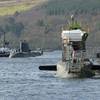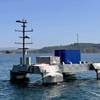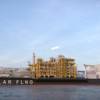Antwerp Port Volume up 3.3% in 9 months
The port of Antwerp continues its excellent performance, handling 161,671,573 tonnes of freight in the first nine months of this year, up 3.3% on the same period last year. The container volume in the first three quarters came to more than 7.5 million TEU. This represents growth of 4.0%, thus further expanding Antwerp’s market share for containers in the Hamburg-Le Havre range.
Containers and breakbulk
The container volume rose during the first nine months by 3.7%, finishing at 88,639,126 tonnes. In terms of the number of TEU handled the figure came to 7,556,386, an increase of 4.0%.
Ro/ro for its part was down by 1.9%, finishing at 3,398,867 after the first nine months. The number of cars handled experienced a slight dip during the month of September, so that the overall growth during the first six months went into reverse during the third quarter, falling by 2% to 894,475 units. The volume of conventional breakbulk on the other hand remained practically the same at 7,266,951 tonnes, just 0.5% down. The steel volume, however, experienced very strong growth, up 15.3% to 5,748,492 tonnes. On the down side increasing containerisation led to a lower conventional volume of paper (down 44.4% to 436,444 tonnes) and fruit (down 26.5% to 377,418 tonnes).
Liquid bulk
The liquid bulk volume rose during the first nine months by 6.7% to 53,103,919 tonnes. As for oil derivatives the nine-month figure was 38,988,139 tonnes, an increase of 10.3%. The volume of crude oil too was up slightly, by 1.0% to 3,407,407 tonnes.
Dry bulk
Meanwhile the volume of dry bulk continues to decline: after nine months the figure stood at 9,262,710 tonnes, representing a fall of 11.6% compared with the same period in 2015). More specifically, negative performance was noted for ores (down 16.9% to 1,477,898 tonnes), fertilisers (down 3.7%% to 2,634,153 tonnes) and sand and gravel (down 20.1% to 1,011,145 tonnes).
Seagoing ships
The number of seagoing ships was up by 1.0%, with the number of calls totalling 10,894 as at 1 October. Not only was there an increase in the number of ships, there was continuing strong growth in gross tonnage. This rose by 11.3% to 301,661,005 GT, demonstrating the trend towards ever larger vessels.













